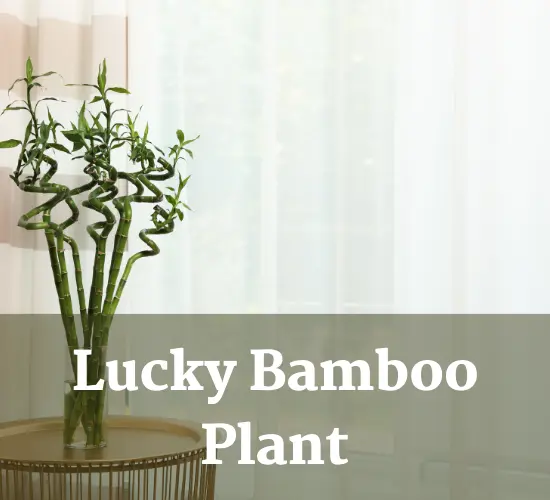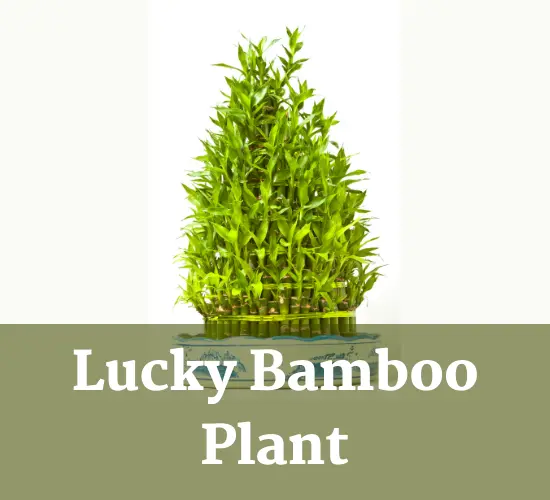Table of Contents
Is Lucky Bamboo real Bamboo?
Lucky bamboo has been a symbol of good fortune in Feng Shui for over 5000 years. This plant, although not a true bamboo, is easy to grow and maintain, making it a popular choice for those seeking to add a touch of luck to their homes.
However, it is important to note that lucky bamboo is toxic to pets and humans, so caution must be taken when caring for it.
The benefits of having lucky bamboo in the home extend beyond just its symbolic value. This plant is known for its ability to purify the air, making it an excellent choice for those seeking to improve the air quality in their homes.
Additionally, lucky bamboo is believed to bring prosperity, wealth, and abundance to those who keep it in their homes.
In this article, we will explore the symbolism of lucky bamboo in Feng Shui, as well as provide tips for growing and caring for this plant to unlock its full potential for good luck.
Key Takeaways

- Lucky bamboo is a powerful tool for bringing good luck and positive energy into a space, as it effectively channels Chi, the universal life energy.
- Lucky bamboo embodies all five elements of Feng Shui and is believed to bring prosperity, wealth, and abundance to those who keep it in their homes.
- Proper cultivation and maintenance of lucky bamboo include providing adequate lighting, appropriate watering, limited fertilization, and pruning techniques to promote bushier growth.
- Lucky bamboo can be grown in a variety of containers and can also be propagated by taking stem cuttings and placing them in water until they root.
Feng Shui Symbolism
The symbolism of lucky bamboo in Feng Shui is significant, as it holds deep symbolic meanings. In traditional use, lucky bamboo embodies all five elements of Feng Shui: water, wood, earth, fire, and metal. The plant is believed to effectively channel Chi, the universal life energy, making it a powerful tool for bringing good luck and positive energy into a space.
Lucky bamboo is commonly used in Feng Shui applications to enhance positive energy flow and bring good fortune to a home or office. The number of bamboo stalks also holds symbolic meaning, with different numbers representing various aspects of life, such as wealth, love, and health.
By incorporating lucky bamboo into a space, individuals can tap into its symbolic meanings and harness its powers to unlock good luck in their lives.
Growing and Care Tips
To properly cultivate and maintain the healthy growth of lucky bamboo, it is essential to provide it with adequate lighting, appropriate watering, and limited fertilization. Lucky bamboo prefers bright indirect sunlight, so placing it near a window or under fluorescent lights is ideal. It is important to avoid direct sunlight as this can cause the leaves to scorch.

Watering should be done when the top 50% of the soil is dry, but be careful not to overwater as this can lead to root rot. Fertilization should be done sparingly, as lucky bamboo is not a heavy feeder.
Pruning techniques can be used to control the growth of lucky bamboo and to promote bushier growth. To prune, simply cut off the top of the stem just above a node. This will encourage the plant to sprout new stems from that node. Lucky bamboo can also be propagated by taking stem cuttings and placing them in water until they root.
When it comes to container options, lucky bamboo can be grown in a variety of containers, including glass vases, ceramic pots, or even in a dish with pebbles and water. Just be sure to choose a container that is at least two inches wider than the root ball to allow for growth.
With proper care and attention, lucky bamboo can bring good luck and positive energy into any space.
Propagation and Common Issues
Propagation of Lucky bamboo(Dracaena Sanderiana) can be achieved by taking stem cuttings and placing them in water until they develop roots, which can take up to several weeks, but once established, the new plants can grow up to three feet tall in nature.
To propagate lucky bamboo, first select a healthy stem with at least one node, which is where the roots will emerge. Cut the stem at a 45-degree angle with sterile pruning shears and place it in a container filled with water that covers the node. Change the water every few days to prevent bacterial growth and keep the cutting in a bright, indirect light. After a few weeks, you should see roots emerging from the node, and once they are at least an inch long, you can plant the cutting in soil or continue to grow it in water.
While lucky bamboo is generally easy to grow, there are some common issues that can arise during propagation. One of the most common issues is the development of yellow leaves, which may indicate overwatering or too much light. To prevent yellowing, make sure the cutting is in a location with bright, indirect light and water it sparingly.
Additionally, make sure the container is clean and free from any debris or algae, as this can cause bacterial growth and affect the roots. By following these propagation techniques and troubleshooting tips, you can successfully grow lucky bamboo and unlock its potential for good luck in your home or office.
Frequently Asked Questions
Is there a specific direction that lucky bamboo should be placed in for optimal Feng Shui benefits?
Positioning advice for lucky bamboo in Feng Shui practices is to place it in the East or Southeast corner of the room. This represents the Wood element and symbolizes growth, vitality, and abundance. Avoid placing it in the South corner as it represents Fire and may cause conflict.
Can lucky bamboo be grown in water alone, or does it need soil?
Lucky bamboo can be grown in water alone using hydroponic growing techniques. It can also be propagated by stem cuttings and placed in water. Soil is not necessary for the plant’s growth and development, making it a versatile and low-maintenance plant for indoor cultivation.
How often should lucky bamboo be pruned to maintain its shape?
To maintain the shape of lucky bamboo, pruning frequency depends on the desired shape and growth patterns. Maintenance tips include using sharp, clean tools and cutting at an angle. Shaping techniques involve bending the stems and tying them until they are set.
Are there any specific superstitions or beliefs regarding the number of stalks of lucky bamboo in a plant arrangement?
Number symbolism and cultural significance surround the number of stalks in lucky bamboo arrangements. The most popular is the “lucky seven,” which represents good health and prosperity. Different arrangements have varying meanings, making lucky bamboo an interesting and meaningful gift.
Can lucky bamboo be grown outdoors in a garden or does it need to be kept indoors?
The lucky bamboo plant can be grown outdoors in a container, but it requires specific conditions. Outdoor growth requires a shaded area with indirect sunlight and consistent watering. It is important to note that lucky bamboo is not true bamboo and can be toxic to pets and humans.